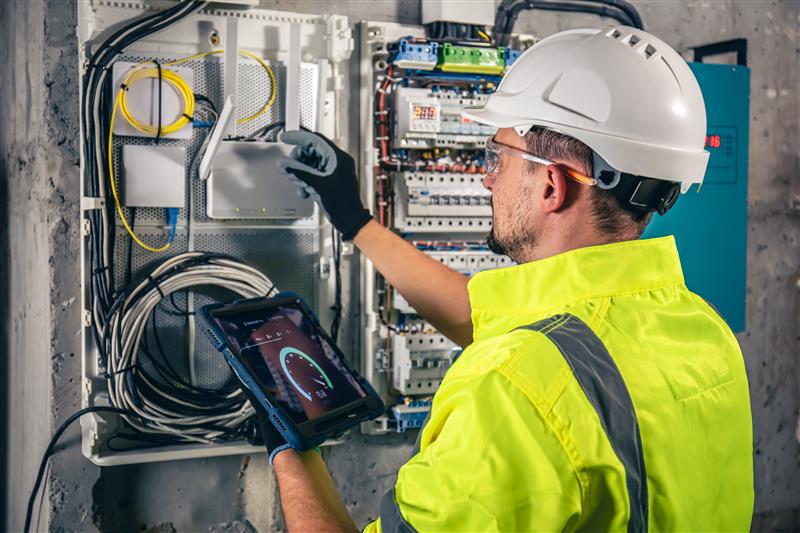Introduction
Protection and control systems are the backbone of modern utility reliability. As electric grids grow more complex, integrating renewables, digital substations, and extreme weather adaptation, the ability to prevent outages depends on how intelligently utilities monitor and respond to faults.
These systems serve as automated gatekeepers, instantly detecting, isolating, and mitigating faults that could escalate into widespread outages. For utility risk managers and executives, investing in advanced protection and control systems is not just about compliance, it’s a strategic imperative.In this blog, we explore how modern protection and control strategies help utilities maintain uptime, protect critical infrastructure, and meet ever-tightening reliability targets.
Why Protection and Control Systems Matter More Than Ever
The electric grid is growing more complex, not just in scale but in behavior. Integration of renewables, extreme weather risks, aging infrastructure, and bi-directional energy flows mean fault detection and response must be both faster and smarter.
Key reasons utilities are upgrading protection and control systems include:
- Rising frequency of localized outages due to aging infrastructure
- Increased risk from cyber threats targeting control systems
- Higher customer expectations for reliability (SAIDI, SAIFI pressure)
- Greater scrutiny from regulators and insurers around outage events
Effective protection systems don’t just respond to faults, they predict, localize, and isolate them before they cascade.
Core Functions of Protection and Control Systems in Utilities
Modern protection and control systems provide multiple layers of defense:
1. Fault Detection and Isolation
When a fault occurs, like a short circuit or broken conductor, protective relays detect it within milliseconds and isolate the affected section by triggering breakers. This prevents equipment damage and larger area outages.
2. Real-Time Monitoring
Advanced control systems constantly monitor voltage, frequency, and current across the grid. If anomalies are detected, they can initiate self-healing sequences or alert operators before conditions worsen.
3. Grid Stability and Load Shedding
During overloads, protection systems may selectively shed non-critical loads to maintain balance. This ensures critical infrastructure, like hospitals or water systems, remains online during disturbances.
4. Event Logging and Post-Fault Analysis
Accurate logs help utilities reconstruct outage events and validate protection system performance. These insights drive reliability improvements and regulatory reporting.
The Financial & Regulatory Cost of Failure
For utility executives, the stakes of inadequate protection are high.
- A single unmitigated outage can cost thousands per minute in penalties, lost revenue, and customer churn.
- Regulatory fines (from NERC, PUCs, FERC) for avoidable blackouts can reach seven figures, especially if safety is compromised.
- Insurance premiums increase significantly when poor controls contribute to repeated failure modes.
Energy and utilities providers face significant financial impacts from outages, the median annual outage cost for energy & utilities firms is over $34 million.
Building Modern P&C Systems: What Utilities Should Prioritize
Smart Relays and Intelligent Breakers
Replacing legacy electromechanical relays with digital IEDs (Intelligent Electronic Devices) offers better precision, programmability, and diagnostics.
SCADA and Substation Automation
SCADA systems provide centralized control, while intelligent substations allow decentralized, real-time response to local events.
Remote Monitoring and Self-Healing Networks
Using sensors, fiber optic links, and automated reclosers, utilities can detect and re-route around faults without human intervention, cutting restoration time by hours.
Cybersecurity for Control Systems
As protection and control move to IP-based platforms, securing them against intrusion is a critical reliability function. NERC CIP compliance is no longer optional.
Who Benefits from Improved P&C Strategy?
Executives & Risk Managers
- Fewer outages = fewer fines, lower O&M, and stronger reliability metrics
- Better loss control improves insurance terms
- Stronger resilience scores during ESG and investor audits
Operations & Engineering Teams
- Faster outage localization and restoration
- More actionable data for predictive maintenance
- Reduced field truck rolls and overtime labor
Regulators & Customers
- Enhanced transparency during outage investigations
- Stronger trust in service providers
- Reduced community impact during storms or load spikes
Think Power’s Role in Protection & Control
At Think Power Solutions, we support utilities in:
- QA/QC for protection relay installations and upgrades
- Digital field inspections of substation control systems
- Independent verification of IED settings and trip coordination
- Integration testing of SCADA and automated reclosers
- Field data collection to inform reliability-centered maintenance
Whether modernizing substations or building a new protection scheme, we bring the digital oversight, engineering experience, and compliance support utilities need to succeed.
Conclusion: Control Is the New Reliability
Modern protection and control systems aren’t just about preventing faults, they’re about preserving resilience in the face of growing threats.
Utilities that invest in smarter fault isolation, predictive analytics, and SCADA-driven response are no longer chasing outages, they’re staying ahead of them.
For risk managers and utility leaders, the message is clear: reliability starts with control.
Let’s build smarter systems that keep the lights on, the data flowing, and the future powered.











